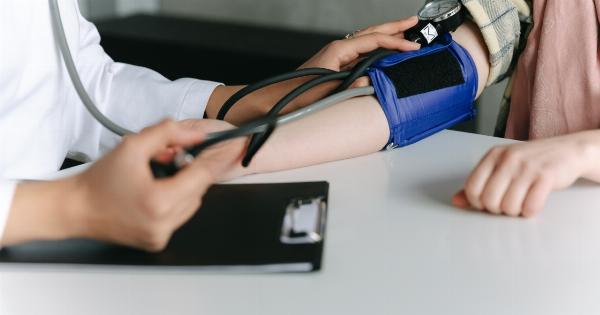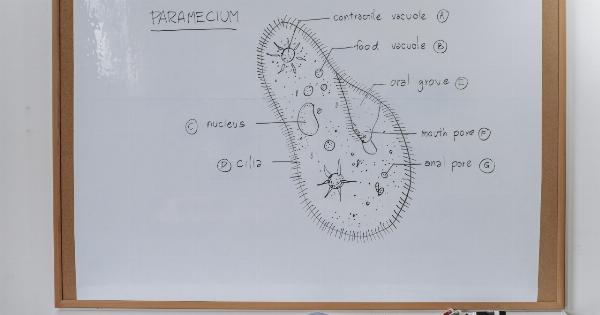Infarction is a medical condition that is caused by obstruction of the blood supply to tissues or inner organs, leading to tissue death or cell damage.
This is usually caused by a blood clot or blockage in the arteries and can commonly occur in the heart, brain, lungs, and other organs. Infarction can be life-threatening and it is important to recognize the symptoms and seek medical attention immediately. Here are some symptoms to look out for:.
Chest Pain or Discomfort
Chest pain or discomfort is one of the most common symptoms of a heart attack or myocardial infarction. The pain can be sudden, severe, crushing, or squeezing and may last for several minutes.
The pain may also spread to the arms, neck, jaw, shoulder, or upper back. Other symptoms that may accompany chest pain or discomfort include sweating, shortness of breath, nausea, vomiting, dizziness, or lightheadedness.
Numbness or Weakness on One Side of the Body
A stroke or cerebral infarction occurs when there is a blockage or rupture of a blood vessel in the brain, leading to brain cell death or damage. This can cause sudden numbness or weakness on one side of the body, especially in the face, arm, or leg.
The affected limb may feel heavy, tingling, or paralyzed. Other stroke symptoms may include difficulty speaking, confusion, vision problems, or severe headache.
Shortness of Breath or Coughing
A pulmonary infarction or lung infarction occurs when there is a blockage of the blood supply to a part of the lung, leading to lung tissue death or damage. This can cause sudden shortness of breath, rapid breathing, chest pain, or coughing up blood.
Other symptoms may include fever, sweating, or weakness. Pulmonary infarction can be caused by a blood clot that travels to the lungs from another part of the body, such as the legs.
Abdominal Pain or Distension
Abdominal infarction or mesenteric infarction occurs when there is a blockage of the blood supply to the intestine or other organs in the abdomen, leading to tissue death or damage.
This can cause sudden severe abdominal pain, nausea, vomiting, or diarrhea. Other symptoms may include abdominal distension, fever, or weakness. Abdominal infarction can be caused by a blood clot, an embolism, or atherosclerosis.
Skin Changes or Ulcers
Skin infarction or peripheral arterial disease occurs when there is a blockage or narrowing of the blood vessels in the legs or arms, leading to tissue death or damage.
This can cause gradual skin changes, such as skin discoloration, ulceration, or gangrene. Other symptoms may include leg or arm pain, cramping, or numbness. Skin infarction can be caused by atherosclerosis, thrombosis, or embolism.
Dizziness or Fainting
A dizzy spell or syncope can result from decreased blood flow to the brain, caused by a heart or brain infarction, or a sudden drop in blood pressure. This can lead to a feeling of lightheadedness, loss of coordination, or passing out.
Other symptoms may include confusion, blurred vision, or ringing in the ears. Dizziness or fainting may also be caused by dehydration, low blood sugar, or other medical conditions.
Persistent Fever or Fatigue
Infarction can also cause systemic symptoms, such as fever or fatigue, which may indicate inflammation or infection as a result of tissue damage or death.
These symptoms may persist for several days or weeks after the initial event and may require medical attention. Other systemic symptoms that may occur include weight loss, chills, or sweating.
Why Early Recognition is Important
Early recognition of the symptoms of infarction is crucial to prevent complications and improve outcomes. Treatment options may include medications, such as anti-platelet agents or thrombolytics, or medical procedures, such as angioplasty or surgery.
The type of treatment depends on the location and severity of the infarction, as well as the patient’s overall health status. Delayed or inadequate treatment may lead to further tissue damage, disability, or death.
Conclusion
Infarction is a serious medical condition that can occur in various organs and tissues of the body. It is important to recognize the symptoms to seek medical attention promptly and receive appropriate treatment.
Chest pain or discomfort, numbness or weakness on one side of the body, shortness of breath or coughing, abdominal pain or distension, skin changes or ulcers, dizziness or fainting, and persistent fever or fatigue are some of the common symptoms of infarction. Early recognition and treatment can improve the chances of recovery and prevent complications.




























